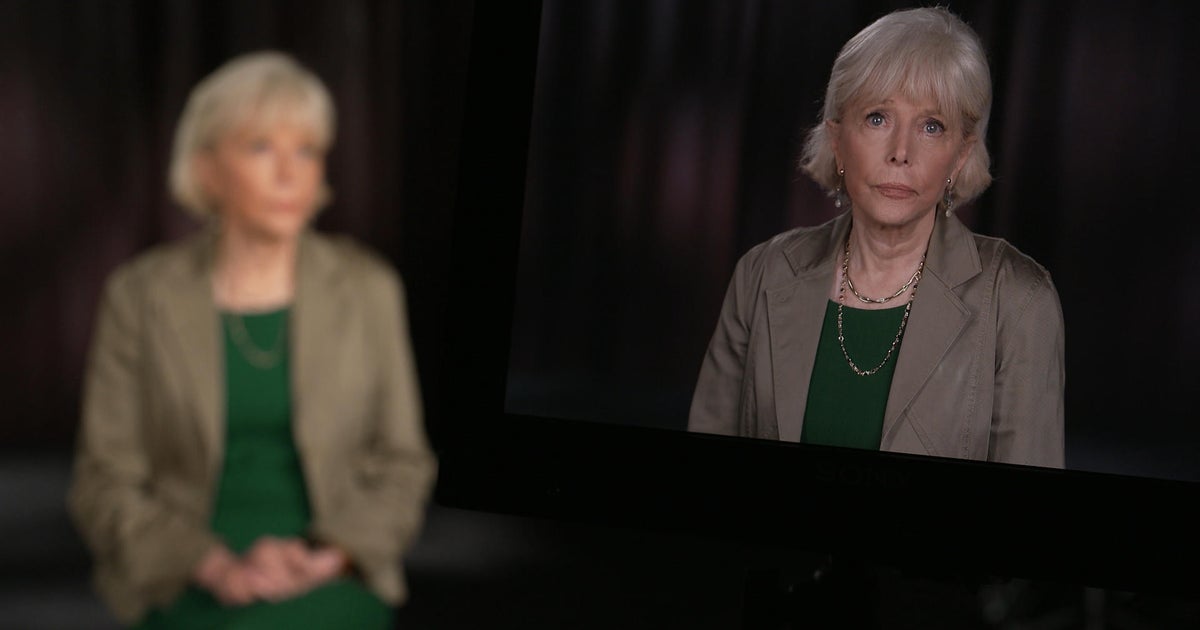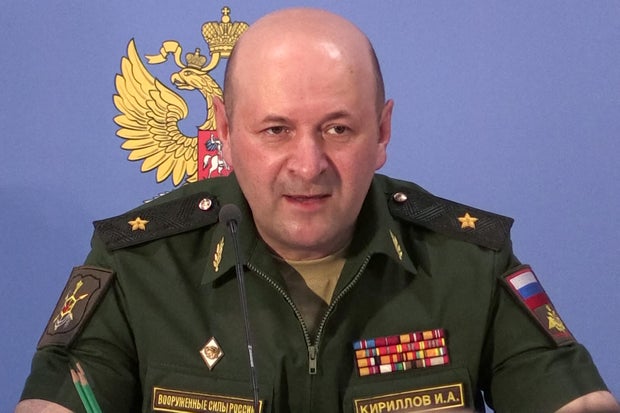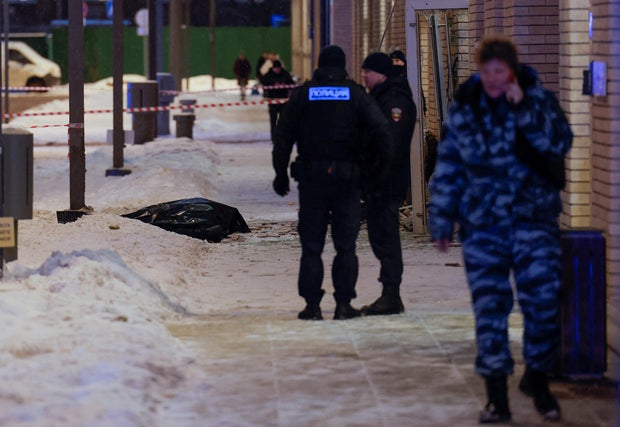CBS News
Lesley Stahl: “On a knife’s point” one year after October 7th

One year ago today, Hamas militants stormed across the border of Gaza.
In communities along the border and at a music festival, they killed more than 1,200 Israelis, raped and sexually assaulted women, and took more than 250 people into Gaza as hostages.
60 Minutes correspondent Lesley Stahl said the pain of that day is still felt amongst Israelis and will be for me some time.
“It traumatized the Israeli population, and I think they’re still suffering from it,” she said.
Now, the war in Gaza that followed rages on, with over 41,000 Palestinians have lost their lives. The Israeli death toll is about 1,500. But the battlefront has now expanded to include Lebanon, Yemen, and Iran.
“The United States has tried so hard not to allow this to happen…the war has expanded, deepened, and escalated,” Stahl explained.
In an interview with 60 Minutes Overtime, Stahl reflected on the events of Oct. 7, her reporting in Israel over the last year, and the expanding war that has brought the Middle East to a “knife’s point.”
Oct. 7, 2023
In the days that followed the Oct. 7 attacks, Lesley Stahl and 60 Minutes producers Shachar Bar-On and Jinsol Jung reported from Israel.
They spoke to Amir and Miri Tibon, residents of Nahal Oz. They had hidden in a safe room with their children while Hamas militants rampaged through their kibbutz.
“It’s a moment I will never forget, when we started hearing the automatic gunfire. And we looked at each other and we just both had the same look of horror,” Amir said.
“We heard the Arabic. I’m like, ‘Amir, they’re here,’ Miri told Stahl.
The 60 Minutes team also met Bar and Lior Matsner, survivors of the massacre at the Nova music festival.
They tried to flee in their car but had to abandon it and hide under dead leaves until help arrived.
They told Stahl that Israel would never be the same again, and that they wanted to move to another country with their two children.
“It was a surprise. Israeli intelligence… didn’t see it coming, even though there were warning signs. The army wasn’t ready. It was a Jewish holiday, so a lot of soldiers were not at their posts,” Stahl told Overtime.
“It was a total massacre. Israelis say it’s the worst massacre of Jews anywhere since the Holocaust.”
In December of 2023, Stahl interviewed Alon Gat, who was abducted by Hamas militants on Oct. 7 along with his wife, Yarden, and daughter. The militants also shot and killed his mother.
He and his daughter managed to escape. His wife was held hostage for 54 days and eventually freed in a prisoner swap. But another family member was taken that day and remained in captivity at the time of the interview: Alon’s older sister Carmel.
Alon described the agony of not knowing what was happening to her sister and the other hostages.
“I’m scared for…Carmel and for all the other hostages. I’m scared that something will happen to them— every day, every second.”
Sadly, Alon’s sister Carmel was executed by Hamas, along with five other Israeli captives, after nearly 330 days in captivity.
“It was very painful because… her family expected that she would be coming out in what they thought would be [another] imminent prisoner swap,” Stahl said.
Today, 100 of the 250 hostages are believed to remain in Hamas captivity. But Israelis fear only half of them are still alive.
War in Gaza
Almost immediately after the Oct. 7 attacks, Israel began an assault on the Gaza strip. The war is still ongoing one year later.
Now, as the war enters its second year, more than 41,000 Palestinians have lost their lives in Gaza. Many more have lost their homes. The Israeli death toll is about 1,500.
“There’ve been charges of indiscriminate bombing [and] terrible pictures coming out of Gaza, of children being killed and maimed. This has hurt Israel’s image around the world,” Stahl told 60 Minutes Overtime.
In February, 60 Minutes correspondent Sharyn Alfonsi interviewed an American doctor, Dr. Nahreen Ahmed, the former medical director of MedGlobal, who worked at Nasser Hospital in southern Gaza and had just finished a two-week stretch.
Dr. Ahmed told Alfonsi that she would see between three or four waves of mass casualties on any given night and noted that supply shortages made treating patients difficult, sometimes impossible.
“A regular day for me was seeing children with shrapnel injuries I have never in my life seen before, with traumatic brain injury, death happening in a fully treatable situation because the supplies are not available,” she told Alfonsi.
The Palestinian Ministry of Health estimates that women and children make up a majority of the over 41,000 people killed in Gaza since October 7th.
Hezbollah
On an almost daily basis in the months following Oct. 7, Iran-backed Hezbollah fighters fired rockets and sent explosive drones into Israeli territory, and the Israeli military fired back into Lebanon.
Israeli residents near the border, more than 60,000 people, have evacuated the area for their safety. Residents in southern Lebanon also evacuated as the fighting intensified.
In April, Stahl and a 60 Minutes team traveled to northern Israel and reported from these deserted communities.
The town of Metula has almost been completely abandoned. But a few residents, like the town’s mayor and others, have stayed behind to monitor incoming fire from Hezbollah militants.
Stahl and the 60 Minutes team were taken into an underground bunker complex, with a war room and cameras facing the hillsides of Lebanon to monitor incoming attacks.
Watching a camera feed facing Lebanon, the town’s mayor told Stahl that it takes a Hezbollah missile eight to 20 seconds to reach Metula when fired from across the border.
Twenty minutes after they arrived to tour the bunker, Stahl and the team were told they had to shelter in place. An explosive drone had been spotted hovering above them.
Israeli fighters tried to shoot it down, but the explosive drone would eventually explode, wounding two Israeli soldiers who would later die from the injuries.
After waiting an hour, Stahl and the team were told they needed to run to their cars and evacuate the area. They heard explosions in the distance as they drove off.
“Now, this war since then has heated up. It’s escalated. It’s intense,” Stahl told Overtime.
Israel is in the midst of an air and ground invasion to fight Hezbollah inside Lebanon.
At the same time, Israeli airstrikes have rained down on towns and cities in southern and eastern Lebanon. They’ve reached as far into the country as Beirut, the country’s capital.
Lebanon’s health ministry said over 2,000 people have been killed and one million displaced since the airstrikes began.
“Civilians caught in the middle, as always, are the ones suffering the most,” Stahl told Overtime.
The Israeli military said it is targeting Hezbollah leadership with the airstrikes. Last week, an Israeli airstrike killed Hezbollah’s leader, Hassan Nasrallah, in Beirut.
“Israel, I think feels pretty confident that they’re winning at this point,” Stahl told Overtime.
Stahl said it is unclear how long the fight with Hezbollah will continue, and when residents in northern Israel will be able to return to their homes.
“We have seen no signs that they’re allowing Israelis to move back at this stage.”
Iran
Since Oct. 7, another battlefront in the war has emerged between Israel and Iran.
On April 12, Iran launched over a hundred projectiles at Israel in an unprecedented, direct attack, in retaliation for the assassination of a top Iranian general in Damascus, Syria.
It was a massive and synchronized attack: about 170 explosive drones, over 30 cruise missiles and 120 ballistic missiles.
Israeli pilots shot down the drones and cruise missiles, and their “Arrow” defense system took down ballistic missiles. Only a handful made it through.
A coalition of allies, like the United States, Saudi Arabia, and Jordan, assisted in the interception, and other Arab countries allowed Israel to fly over their air space to take them down.
In April, Stahl spoke to Brigadier General Omer Tischler, who is second in command of the Israeli Air Force.
General Tischler showed 60 Minutes the control room where he sat on the night of April 13th as one of the leaders who helped direct Israel’s defense.
In an interview, he said that the attack was something Israel had never seen: a direct attack that was launched from Iran itself, and not one of its Iranian-backed proxies.
“Till that night, Iran [attacked] us using its proxies from Yemen, from Iraq, from Syria, from Lebanon. But on that night, Iran [attacked] Israel directly,” he told Stahl.
“And Iran knows that we are capable of attacking at any given time.”
Last week, Iran attacked Israel again: about 180 missiles were launched from Iran directly at Israel.
Israeli defense systems and American Navy destroyers were able to intercept most of the incoming missiles, but a few landed in southern and central Israel.
Israeli president Benjamin Netanyahu, on the eve Rosh Hashanah, the Jewish New Year, vowed retaliation for the attack: “We will stand by the rule we established: Whoever attacks, we will attack them.”
Fears are growing that Israel may try to attack Iran’s nuclear capabilities in a retaliatory strike. President Biden has made it clear that the U.S. will not support that.
On Wednesday of last week, a reporter asked, “Would you support an attack on Iran’s nuclear sites by Israel?”
“The answer is ‘no’…they have a right to respond, but they should respond in proportion,” the president said.
“Netanyahu has a habit of not listening to [President] Biden. So, that’s up in the air,” Stahl told Overtime.
“On a Knife’s Point”
Stahl told 60 Minutes Overtime that today, on the anniversary of the October 7th attacks, there is a palpable feeling of uncertainty due to the escalation of war in the Middle East over the last year.
“Right now, we’re in the fog of war. Everything’s unclear,” she told Overtime.
“[We’re] on a knife’s point right now in the Middle East. Everybody in the West is working hard to try and cool things off, but it’s awfully hard to convince Iran and Israel to step back.”
At the same time the U.S. presidential election is under way. Stahl said that whoever wins the presidential election will be a “wartime president.”
“Every couple of years things explode over there. And our presidents, certainly in my lifetime have been a huge factor…a strong ally of Israel in that part of the world,” Stahl told Overtime.
“It’s not going to be easy for the new president, whoever it is, to manage this time.”
The video above was produced by Will Croxton. It was edited by Sarah Shafer Prediger.
Photos and video courtesy of Getty Images, AFP, South First Responders and IDF
CBS News
2 sisters, 7 years apart in age, also receive heart transplants 7 years apart in Chicago

CHICAGO (CBS) — Two sisters have grateful hearts after they both received heart transplants at the same age—seven years apart.
Younger sister Meredith Everhart and older sister Abbey Cannon are now bonded by a genetic condition and a second chance at life.
“What’s ironic is that when she needed a heart transplant, was exactly the same age I needed a heart transplant,” said Cannon. “Seven years apart in age, seven years apart within 30 days of transplant, and our birthdays are within 30 days.”
The sisters share a special bond of getting a second chance at life, which they both received at the age of 38 years old.
Both sisters suffer from hypertrophic cardiomyopathy—otherwise known as HCM.
The genetic condition is a form of heart disease that causes the heart muscle to thicken.
In 2012, Cannon had chest pain. She was misdiagnosed in Nashville, Tennessee, and got a second opinion at Northwestern Medicine in 2016.
“Within six months, I was inpatient on an aortic balloon pump waiting for a heart,” Cannon said. “I ended up getting my heart 32 days later, So my date is February 27, 2017.”
Just months after Cannon’s transplant, Everhart was diagnosed with HCM too. She tried medication and participated in clinical trials, but her condition kept getting worse.”
“For me, it was, she’s right—I was in denial for a long time,” said Everhart, “and I didn’t want to be sick. I was in my 20s. I was in my early 30’s. I was like, this is not happening. I saw how bad she suffered.”
In May 2022, Everhart got COVID-19, and it sent her into heart failure.
She was added to the transplant list one year later.
“I got the call on January 29 of this year, 2024, and it’s been a journey,” Everhart said. “It’s been fantastic though. Northwestern has been great.”
Cannon said she can’t stress enough how important it is to become an organ donor.
“Had we not had someone that gave that most selfless gift, neither of us would be here,” she said.
CBS News
Congo says mystery disease behind dozens of deaths of women and children finally identified as severe malaria

Johannesburg — For weeks it was dubbed simply “Disease X.” But the mysterious flu-like disease that has killed more than 143 people — mainly women and young children — in the Democratic Republic of Congo has finally been identified.
“The mystery has finally been solved,” Congo’s health ministry declared in a statement on Tuesday. “It’s a case of severe malaria in the form of a respiratory illness.”
The health agency said malnutrition in the hardest-hit region had weakened the local population’s immunity, leaving them more vulnerable to the disease. People who contracted the malaria infection have exhibited symptoms including headache, fever, cough and body ache.
The Congo’s health minister had told journalists the country was on “maximum alert” over the spread of the previously unidentified disease, and health officials told CBS News in early December that the remoteness of the epicenter of the outbreak and lack of a diagnosis made it difficult to launch a concerted response.
Samy Ntumba Shambuyi/AP
At least 592 cases were reported after the alert was first raised by Congo’s health ministry on Oct. 29. The ministry said the disease had a fatality rate of 6.25%. More than half of the deaths recorded were children younger than five who were severely malnourished when they contracted the disease, according to the World Health Organization.
At a press briefing on Dec. 10, WHO Director-General Tedros Adhanom Ghebreyesus said 10 out of 12 samples from patients suffering from the mysterious disease had tested positive for malaria, but he said they were still testing at the time for other diseases.
The Congolese government had sent a rapid intervention team to the Kwango province, 435 miles southeast of capital city Kinshasa, consisting of epidemiologists and other medical experts. Their objective was to identify the disease and mount a suitable response. Government officials had earlier warned locals to avoid touching people infected with the illness or the bodies of those who had died.
Congo has suffered from many disease outbreaks in recent years, including typhoid, malaria and anemia. The country has also grappled with an mpox outbreak, with more than 47,000 suspected cases and over 1,000 suspected deaths from the disease, according to the WHO.
Anti-malaria medicine provided by the WHO was being distributed at local health centers in Congo, and WHO officials said more medical supplies were due to arrive in the country Wednesday.
It’s the rainy season in Congo, which often sees a rise in malaria cases, and will certainly complicate treating those most at risk.
CBS News
Russia says suspect detained in killing of Gen. Igor Kirillov, head of Russian chemical weapons unit

Moscow — Russia’s security service said Wednesday that it had detained a suspect in the killing of a senior general in a Moscow bomb blast. The suspect was described as an Uzbek citizen whom the agency said had been recruited by Ukrainian intelligence services.
Ukrainian security sources told CBS News on Monday that the Security Service of Ukraine (SBU) was behind the explosion that killed Lt. General Igor Kirillov. The claim couldn’t be independently verified, but Russian officials quickly vowed to take revenge against Ukraine’s leaders.
Russia’s Federal Security Service didn’t name the suspect, but it said he was born in 1995. According to an FSB statement, the suspect said he was recruited by Ukrainian special services.
AFPTV / AFP via Getty Images
“Kirillov was a war criminal and an absolutely legitimate target, since he gave orders to use prohibited chemical weapons against the Ukrainian military,” an informed source in the SBU asserted to CBS News. “Such an inglorious end awaits everyone who kills Ukrainians. Retribution for war crimes is inevitable.”
Kirillov was killed by a bomb hidden in an electric scooter outside his apartment building in Moscow, a day after Ukraine’s security service leveled criminal charges against him. His assistant also died in the attack.
The FSB said the suspect had been promised a reward of $100,000 and permission to move to a European Union country in exchange for killing Kirillov. It said that, acting on instructions from Ukraine, the suspect traveled to Moscow, where he picked up a homemade explosive device. He then placed the device on an electric scooter and parked it at the entrance of the residential building where Kirillov lived.
The suspect then rented a car to monitor the location and set up a camera that livestreamed video from the scene to his handlers in the central Ukrainian city of Dnipro. When Kirillov was seen leaving the building, the suspect detonated the bomb.
According to the FSB’s statement, the suspect faces “a sentence of up to life imprisonment.”
Kirillov, 54, was the chief of the Russian military’s radiological, biological and chemical protection forces. Either Kirillov himself or his military unit were sanctioned by several countries, including the U.S., Britain and Canada, for the alleged use of chemical weapons on the battlefield in Ukraine. On Monday, Ukraine’s SBU had opened a criminal investigation against him, accusing him of directing the use of banned chemical weapons.
Maxim Shemetov/REUTERS
Ukraine’s SBU has said it recorded more than 4,800 occasions when Russia used chemical weapons on the battlefield since President Vladimir Putin launched his full-scale invasion in February 2022. In May, the U.S. State Department announced sanctions against Kirillov’s unit, saying the U.S. had recorded the use of chloropicrin, a poison gas first deployed in World War I, against Ukrainian troops.
Russia has denied using any chemical weapons in Ukraine and, in turn, has accused Kyiv of using toxic agents in combat, and Kirillov was allegedly behind the spread of that propaganda.
Kirillov, who had been in his post since April 2017, was accused by the U.S. government of helping to spread disinformation about biological weapons and research.
In March 2023, about a year into Russia’s full-scale invasion, the U.S. State Department said Kirillov had “significantly increased his media engagement” to issue repeated, baseless claims that the U.S. government had been involved in creating both the mpox virus and COVID-19, and that the U.S. “is developing biological weapons able to selectively target ethnic groups.”
“The U.S. Government is concerned that this false narrative may be a prelude for a false-flag operation, where Russia itself uses biological, chemical, or nuclear weapons in Ukraine, and then attempts to blame it on Ukraine and/or the United States,” the State Department said at the time.
Sefa Karacan / Anadolu via Getty Images
The bomb used in Tuesday’s attack was triggered remotely, according to Russian news reports. Images from the scene showed shattered windows and scorched brickwork.
Russia’s top state investigative agency said it’s looking into Kirillov’s death as a case of terrorism, and officials in Moscow vowed to punish Ukraine.






